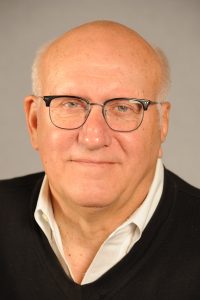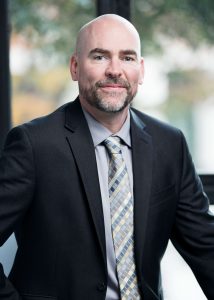Help Wanted: Recruiting America’s Future Workforce Through Grassroots Campaigns
Published on February 24, 2020, at 7:46 p.m.
by Dylan Lanas.
What is the skills gap?
Manufacturers need skilled workers … a lot of skilled workers — quickly. The search comes amidst a growing pool of open jobs as the economy recovers from the Great Recession of over a decade ago. This paradoxical conflict is the result of what has been called a skills gap.

In short, there are not enough qualified workers to keep up with the rate of jobs opening up in the manufacturing sector. In some cases, this shortage has broken records in unfilled jobs, such as in September 2019 when 522,000 manufacturing positions were left vacant.
Industry leaders now face the burden of finding a quick solution to avoid a dreary economic forecast — one that could cost $2.5 trillion in U.S. GDP by 2028, according to Deloitte.
Meanwhile, public relations and integrated communications professionals play a quiet, yet important role in educating audiences and gaining skilled workers through grassroots campaigns.
Using public relations on a national scale to recruit workers
Industry recruiting efforts turn to the rising generation of workers as the catalyst to flip the employment trend. SkillsUSA makes

up one of the major forces in finding and training skilled workers. The organization accomplishes this development by uniting students, educators and industry partners in order to fulfill workforce needs collaboratively. Though the organization covers many more industries than just manufacturing, skilled industrial labor remains a major focal point.
When it comes to recruiting students, one major problem persists: “When people think of manufacturing, they think of dark, dirty and dangerous work,” Eric Gearhart, a SkillsUSA partnership consultant, said. “The truth is that those kinds of jobs don’t exist anymore. They’ve been replaced with high-tech roles.”
More stigma remains in skilled labor and the pathways to these jobs. A 2016 Mississippi State University report revealed that students and even educators either have negative attitudes toward career technical education (CTE) or are uneducated about this opportunity.
SkillsUSA has partnered with multiple PR and communications firms in order to share the organization’s efforts. Among these agencies is Maroon PR, based out of Maryland.
As it turns out, the manufacturing sector’s many messages related to gaining new workers are becoming increasingly accepted.
“In this case, the facts speak for themselves,” said John Maroon, president of Maroon PR. “Rather than incur massive college debt, you can be career-ready with a trade with a solid starting salary.”
Maroon said his agency used a myriad of PR strategies and tactics in order to help SkillsUSA reach its audience, but its main strategy revolved around traditional media relations. Maroon gave a tip for earning media coverage in cases where a SkillsUSA student was being recognized: Keep the message tailored to the student’s locality. Identifying a local angle makes journalists’ jobs much easier and builds interest in the story, Maroon said.

This approach helped Maroon PR publicize SkillsUSA’s international presence, as the organization’s WorldSkillsUSA team participated in a global competition in Kazan, Russia.
“We went into the hometown of select competitors and pitched the story,” Maroon said. “That angle was received very well, especially with all of the mystery around Russia these days.”
Another tip? When coordinating coverage between a student and a media member, Maroon said that keeping the client comfortable during the interview and knowledgeable of just two to three speaking points helps ensure consistent messaging.
Recruiting at the state level
Markstein, an integrated marketing communications agency based out of Birmingham, Alabama, faces the same goal as Maroon PR in gaining new skilled workers in the state of Alabama. Markstein works with Go Build Alabama, a program focused particularly on connecting students with construction jobs.
“One of the most important first steps is research,” said Chris Hoke, chief creative officer at Markstein. “We really went deep into figuring out our target audiences and how to reach them with the right messages.”
Hoke said that this research led to the creation of multiple personas based on psychographic and demographic profiles that explained their motivation to enter a certain field. These findings directly led to which specific communication tactic Markstein would use in reaching them.
Keeping messages strategically tailored yields the most effective results, similarly to Maroon PR’s approach.
One particular persona Markstein crafted is “the influencer,” according to Hoke. This profile consists of parents and educators — the people who play a direct role in getting their own students to consider manufacturing jobs and the pathways toward them. Hoke said that this approach has led to Markstein working with organizations that focus on the education side of CTE, such as AlabamaWorks’ regional branches.
Working with organizations like AlabamaWorks is just one case of the agency reaching out to other organizations. Hoke said that this interconnectedness from being a liaison, while vast, opens up the topic of the skills gap. As a result, his agency gains influence within many more niche groups, such as executive boards and local contractors. This exposure, Hoke said, also helps the agency understand the client’s situation from a more complete perspective.
“I think this is important to any true PR effort. We really start from a grassroots level,” Hoke said.

Along with the ground-up approach of the Go Build Alabama campaign, Hoke also noted the importance of data.
“Markstein’s approach is rooted in data, and we collect a lot of it,” Hoke said. “We can then use that data to make adjustments to the campaign moving forward.”
Hoke credited the benefit of automated data collection in a digital age for allowing this quantitative approach to be feasible. For example, by using digital marketing techniques such as persona-based video ads to visitors of the Go Build Alabama website, Markstein can see audience engagement with campaign ads in real-time.
The bottom line
The skills gap remains a real and pressing issue for America’s economy. Despite this, recruiters are confident in the steps being taken today to help prevent the possible manufacturing problems of tomorrow.
A U.S. Department of Education report from 1990 through 2009 gives a look into the bleak situation manufacturing workforce development was in not too long ago. In this time period, CTE enrollment dropped sharply. Skip ahead to a recently renewed interest in career technical education and statistics from 2017 show growth, with 98% of all public school districts responding that they offer CTE programs.
From a PR standpoint, agencies and partnerships feel this growth on a more personal level.
“Figuring out how to use public relations to actually change perceptions,” Hoke explained, “that’s what we’re passionate about.”
Gearhart calls this appreciation for seeing the change in his audiences and results of his campaigns as psychic income.
“At the end of the day, we’re trying to serve our students and our partners. When those two come seamlessly together, it feels pretty good,” Gearhart said.




